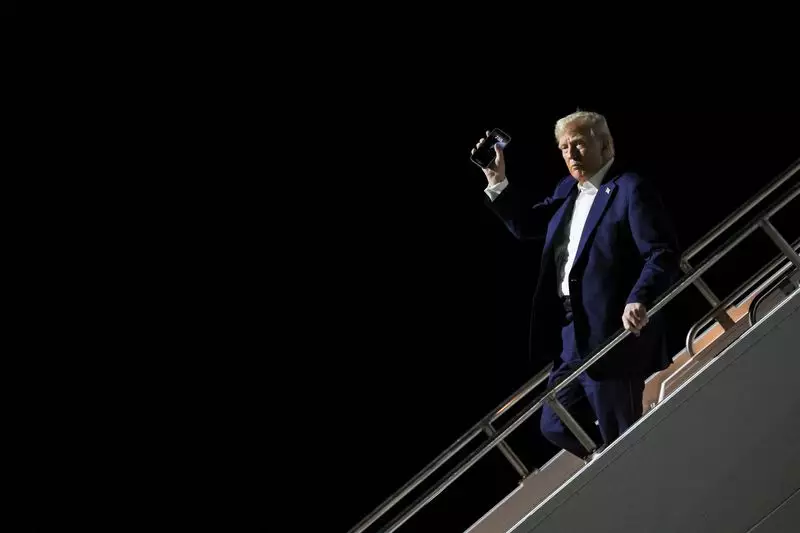In a dramatic return to the political limelight, President Donald Trump is leveraging his first week back in office to articulate an ambitious agenda that includes a significant reduction of taxes on tips for service workers. This focus on the hospitality sector is particularly noteworthy given the crucial role it plays in Nevada’s economy, where a substantial portion of employment hinges on tipping. The visit to Las Vegas marks a strategic pivot for Trump, emphasizing his commitment to issues directly affecting working Americans, especially within the service industry.
The decision to highlight tax reduction on tips aligns with Trump’s longstanding rapport with the hospitality community, which had been a crucial support base during the presidential campaign. Within the backdrop of his grand promises, it is paramount to note the implications of such tax cuts: they could reshape public revenue systems and further complicate the nation’s fiscal landscape. By promising to abolish taxes on tips, overtime, and Social Security, Trump targets voters who are feeling the pinch of rising living costs, including food and gas prices.
In a stark departure from the previous administration’s policies, which sought to promote a more expansive fiscal structure, Trump is actively engaging in dismantling frameworks instituted by former President Joe Biden. His week included visits to areas affected by natural disasters, showcasing a dual commitment to aid while simultaneously suggesting the controversial idea of closing down the Federal Emergency Management Agency (FEMA). This juxtaposition highlights Trump’s penchant for radical changes, implicitly suggesting that reliance on government agencies could be curtailed under his governance.
Critics of this approach argue that such drastic alterations to federal agencies and tax codes could encumber essential services. Even as Trump attempts to revitalize the economy in specific states, his overarching agenda raises alarms about the potential fallout from reducing federal oversight and support, particularly in emergency situations.
Tax Cuts vs. National Debt
The grand vision of ubiquitous tax cuts raises an integral question: who will foot the bill? Analysts warn that Trump’s campaign proposals could impose a staggering $7.5 trillion burden on the nation’s debt over a decade. As Trump’s administration navigates the complexities of fiscal policies, dissenting voices within the Republican Party have begun to surface. Concerns rooted in the sustainability of such expansive tax plans are growing, as some believe they could destabilize the government’s capacity to manage its existing $36 trillion debt problem.
This fiscal tension is palpable, exemplifying a party grappling with internal conflicts over the implications of tax reductions versus fiscal prudence. As indicated by Republican members’ discussions in Congress, there exists a palpable anxiety about the bond market’s response to aggressive tax cuts amidst rising inflation concerns and larger debt obligations.
Trump’s new proposals to compensate for tax cuts via increased tariffs on imports manifest a stark deviation from traditional Republican economic ideologies. This strategy aims to shift the burden of funding tax cuts onto foreign goods, thereby fostering a convoluted economic cycle that could complicate trade relations and provoke retaliatory measures from trading partners. This unprecedented tactic has generated dissent among conservatives who typically align with free trade principles, causing an intra-party rift that could undermine Trump’s broader fiscal ambitions.
Moreover, implementing tariffs could disproportionately impact American consumers, potentially leading to increased costs on everyday goods. As the administration attempts to rally support for this method, the efficacy and reliability of tariff revenue remain contested and uncertain.
As President Trump embarks on this ambitious agenda, he faces a multitude of challenges. The balancing act between delivering on promised tax cuts and managing the national debt will be a defining factor in his potential success or failures regarding policy implementation. With internal party tensions amplifying and economic uncertainties looming, the pathway to achieving his goals appears fraught with contention. In this political era marked by fervent divisions, the implications of Trump’s fiscal promise extend far beyond the battleground states he aims to captivate.

